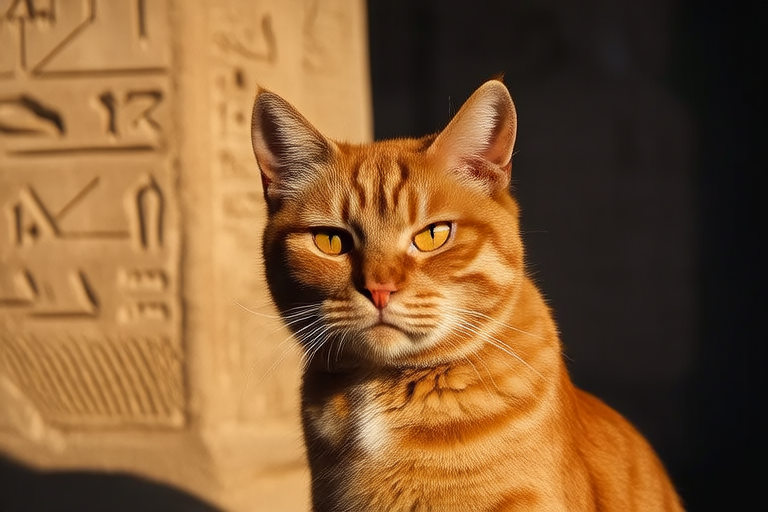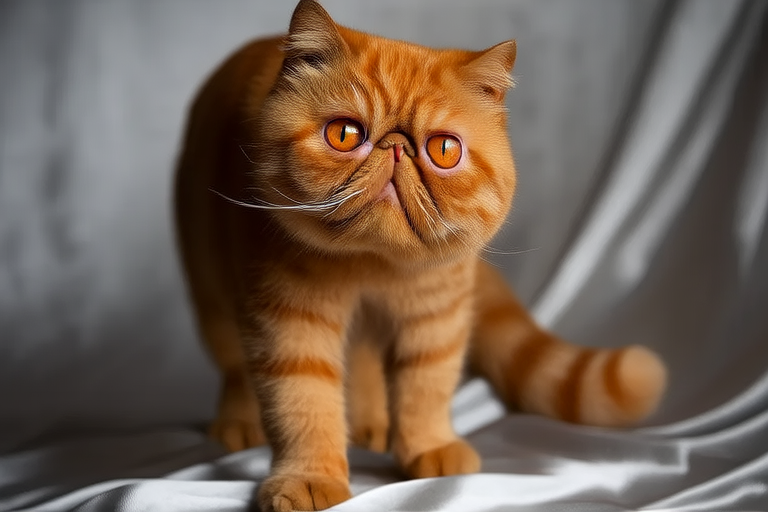
From Temple to Living Room: Journey of the Abyssinian Cat
The Abyssinian cat, with its distinctive ticked coat and almond-shaped eyes, has captivated human hearts for centuries. This elegant feline has a storied past that traces back to ancient times, where it was often associated with divinity and royalty. In this article, we will explore the historical origins of the Abyssinian cat, its transition from sacred temples to modern-day living rooms, and delve into its unique characteristics that make it such a beloved companion.
Ancient Origins and Reverence
The Abyssinian cat’s origins are steeped in mystery and legend. Many believe that these cats originated in the region of Abyssinia, now known as Ethiopia, and were worshipped in ancient Egyptian temples. The Egyptians held cats in high esteem, considering them sacred animals. Cats were believed to be manifestations of the gods, and the Abyssinian’s resemblance to the statues of Bastet, the Egyptian goddess of cats, further solidified its revered status.
Their unique coat patterns, characterized by individual hairs banded with different colors, gave the Abyssinians a distinct and exotic appearance. These markings, known as ticking, are reminiscent of the natural coloration found in wild cats, making the Abyssinian appear almost otherworldly. The Egyptians admired these cats for their agility, intelligence, and striking looks, often depicting them in art and architecture.
Journey to the Modern Era
The transition of the Abyssinian from a divine symbol to a domesticated pet began in the 19th century. British explorers and traders brought these cats to Europe, where they quickly gained popularity among cat enthusiasts. Initially, the Abyssinian was considered a rare and exotic breed, but over time, selective breeding helped establish the breed more firmly within the feline world.
In 1871, the first Abyssinian was exhibited at the Crystal Palace Cat Show in London, marking the beginning of the breed’s formal recognition. From there, the Abyssinian’s presence grew steadily, and it became one of the most sought-after breeds for cat shows and exhibitions. The breed’s journey from the temples of ancient Egypt to the living rooms of Victorian England showcases the enduring appeal of this majestic feline.
Characteristics and Temperament
Abyssinian cats are known for their playful and curious nature. They are highly intelligent and enjoy interactive play, often seeking out toys and games that challenge their minds. Their active demeanor makes them excellent companions for families or individuals who can provide plenty of mental stimulation.
These cats are also very social and tend to form strong bonds with their human families. They are often described as being more dog-like in their behavior, following their owners around the house and participating in daily activities. Abyssinians are generally good with children and other pets, though they may require some time to adjust to new additions to the household.
Health and Care Needs
Abyssinian cats are generally healthy, but like all breeds, they are prone to certain genetic conditions. One of the most common issues is dental problems, which can lead to gum disease if not properly managed. Regular dental check-ups and cleaning are essential to maintain their oral health.
Another concern is a condition called pyruvate kinase deficiency, a hereditary blood disorder that can affect Abyssinians. While there is no cure, early diagnosis and management can help affected cats live relatively normal lives. Regular veterinary check-ups are crucial to monitor the health of Abyssinian cats and address any potential issues promptly.
Care for an Abyssinian cat includes providing a balanced diet rich in nutrients, regular grooming to maintain their coat’s shine and prevent matting, and ensuring they have access to clean water and a comfortable living environment. Their coats require minimal grooming due to their short fur, but occasional brushing helps remove loose hair and distribute natural oils.
The Bond Between Owner and Abyssinian
The relationship between an Abyssinian cat and its owner is one of deep affection and mutual respect. These cats are known for their loyalty and attachment to their human families. They thrive on attention and interaction, often seeking out physical contact and affection from their owners.
The transformation of the Abyssinian from a divine symbol to a cherished companion is a testament to the enduring appeal of this breed. In today’s world, these cats are no longer worshipped in temples but are celebrated in homes across the globe. Their presence brings joy, warmth, and companionship to their owners, making them truly irreplaceable members of the family.
In conclusion, the Abyssinian cat’s journey from temple to living room is a remarkable story of adaptation and evolution. From its origins in ancient Egypt to its current status as a beloved household pet, the Abyssinian continues to captivate and charm those fortunate enough to share their lives with one. With their unique appearance, engaging personalities, and loving natures, these cats remain a testament to the enduring bond between humans and their feline companions.






